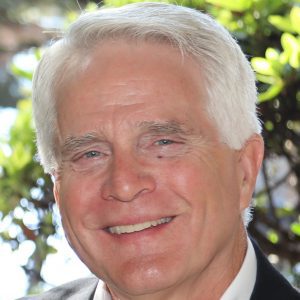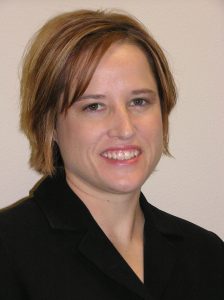No management function is more critical than the ability to hire qualified and competent people. Dental school provides very little help in this area and, as a result, this all-important task seems overwhelming, mysterious, and challenging at best … and a pure gamble at worst.
Consequently, many dentists find themselves ill-prepared for their role as Personnel Manager, lacking the knowledge and/or skills to effectively manage staff. Fortunately, information and tools are available to readily support success with hiring employees.
Good hiring practices reap many benefits. The most significant is a decrease in staff turnover and employee-related stress. The average staff member stays in an office for only about twenty-one months. Conservative estimates are that it costs between $10,000 and $20,000 each time turnover occurs. This cost is a combination of both indirect and direct expenses such as placement of recruitment ads, time to interview, training, and lost production.
One of the most common hiring mistakes is focusing too much on an applicant’s skills and experience. Most skills can be taught, and previous experience does not always equate to proficiency. In contrast, a person’s attitude can rarely be changed, and compatibility is either there or not. Therefore, when hiring, focus first on attitude and compatibility or “fit” and second on skills and experience.
Another common hiring mistake is relying too much on a resume and an interview to make hiring decisions. Studies show while resumes may provide information regarding an applicant’s previous experience and background, they can also be very inaccurate. Resumes and interviews alone do not provide enough information to effectively evaluate a candidate.
Statistically, using a job interview as the principal recruiting strategy has a success rate of only about 14 percent. This increases to 26 percent when coupled with reference checking and to 54 percent when personality and abilities testing is added. When the factor of job-matching assessments is added, the hiring success rate increases to 75 percent. Therefore,
the probability of selecting the right individual the first time increases as layers of evaluation are added.
The process of hiring a great team begins with up-to-date job descriptions. Aside from keeping you in compliance with state and federal laws, job descriptions are one of the best ways to establish expectations and delineate responsibilities. Clearly identifying job duties within the practice helps you more specifically pinpoint the knowledge, skills, and abilities needed to fulfill the position. In addition, providing a copy of the job description to each candidate enables him/her to have a clearer understanding of the job and your expectations before s/he accepts a position.
You don’t have to reinvent the wheel. Job description that are complete, comprehensive, in compliance with the Americans with Disabilities Act, and have established core competencies are readily available for each position in the dental practice, thus reducing the work of creating job descriptions to simple minor practice-specific modifications.
With job descriptions firmly in place, you can more confidently move to the recruiting process. All too often dentists look to just one source for soliciting qualified applicants, which may or may not be successful. To increase the chances of getting more qualified applicants, diversify the methods used to recruit. While your success is somewhat dependent on the labor pool within your job market, look to some of the following resources for quality applicants:
- Current employee referrals
- Existing patients
- Suppliers/Vendors
- Schools
- Employment placement agencies
- Craigslist
- Professional associations
- State Employment Department
- Newspaper advertisement
- Internet job placement services
- Community networking
- Temp agencies
A broad base of recruiting methods should give you multiple applicants from which to choose. After reviewing the resumes received, you will want to pre-screen all qualified applicants. The primary goal is to briefly and quickly qualify or disqualify applicants. This stage is more a “process of elimination” rather than a “process of selection.”
Develop qualifying questions to ask each candidate. The questions must be job-related but can range from work experience to behavioral situations, such as: “Tell me about a time when you had to deal with a difficult patient. What did you do? What was the result?” Typically, pre-screening occurs over the phone. If the answers are unsatisfactory, then you have no obligation to move forward with that applicant.
Ask those candidates with whom you feel comfortable to come in and complete an application. Applications gather specific information regarding past work experience, plus they require a signature confirming the information is true to the best of the applicant’s knowledge. This enables you to verify the supplied information and deny employment if the information is false.
Invite those applicants with whom you are impressed to come in for an interview. The purpose of the structured interview is to build upon the information you already have from the application/resume and the pre-screen. To prepare for the interview, develop a set of specific questions to ask. Planned questions allow you to target and/or seek specific information to support a sound hiring decision, as well as to avoid questions you are not legally permitted to ask. Avoid asking questions that will elicit a “yes” or “no” answer, and focus instead on behavioral-based questions which will elicit a more valuable and comprehensive response.
Conduct the interview in a place where you can have privacy and no interruptions. Create a relaxed, stress-free atmosphere where both you and the applicant feel comfortable. As an interviewer, your primary job is to ask questions, to listen, and to observe. The applicant should talk about 75 percent of the time. Most interviewers are ineffective because they talk too much. Make notes during and after the interview, but keep the notes job-related, rather than cover potentially discriminatory issues. Close the interview by providing a brief overview of pertinent practice information and your philosophy. Inform the applicant of the potential next step in the process, but refrain from making any commitments.
As you narrow the candidates to two to three finalists, you will want each to take an applicant personality assessment. This is an essential and valuable aid in the selection process. The results are designed to reveal talents, attributes, or potential problems that may otherwise go undetected.
As a hiring tool, assessments should not be the sole basis for a particular applicant being rejected or selected. Instead, use the tool to assess perceived attributes, character strengths, and limitations relevant to the job in conjunction with all of the information gathered, to help confirm the overall quality of the applicant. Care must be taken that the assessment does not discriminate, profile, or otherwise target certain groups or protected classes of prospective employees. Therefore, use only validated and approved assessments, such as our “Drake P3” system, which has been validated for the dental profession.
For those positions where evaluating specific job skills are important, you will now want the remaining finalists to come in for a “skills assessment.” A skills assessment, different from the working interview, does not carry the same workers’ compensation and unemployment insurance risks found with the typical working interview. The basic parameters of a skills assessment include limited time (1-2 hours), not replacing a regular worker, not performing productive work, and a form confirming the voluntary/non-paid nature of the assessment, signed by the applicant.
As you move toward your final selection, it is very important to check references and, when appropriate, to perform background checks and drug tests. These checks help reduce the potential problems associated with embezzlement, drug or alcohol abuse, expired occupational licensing, negligent hiring claims, etc. Often, just the knowledge that a reference check, background check, and/or drug test may be performed discourages applicants with a questionable background from applying. By employing the selection process outlined above, you can, over a period of time, assemble the members of a great team, and significantly reduce the emotional stress and financial impact that is otherwise associated with turnover.


Tim Twigg is the president of Bent Ericksen & Associates and Rebecca (Crane) Boartfield is a Human Resources Compliance Consultant for Bent Ericksen & Associates. For 30 years, the company has been a leading authority in human resource and personnel issues, helping employers successfully deal with the ever-changing and complex labor laws.
FMI: www.bentericksen.com

